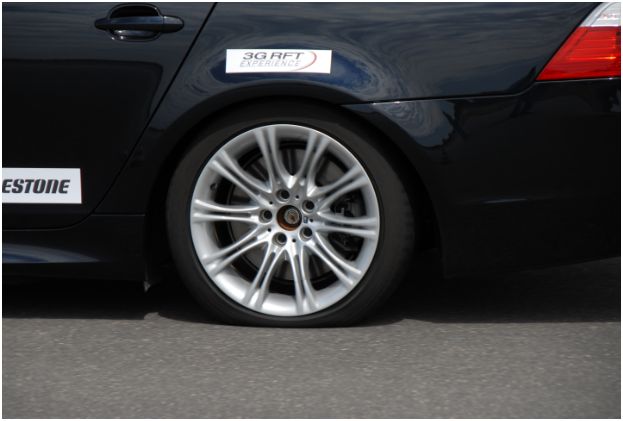If you haven’t heard about run-flat tyres before, don’t despair. They are tyres which, after a puncture, can still be used for some distance to allow you to reach a garage or a safe spot to change or replace the tyre. Read on and discover the advantages and disadvantages of using run-flat tyres.1
What are the effects of having a puncture? 1
It is no myth that to break down with a puncture on the side of the road is very inconvenient and can seriously put a damper on the holiday spirit if the puncture occurs on your way to your holiday destination.. If you have included roadside assistance with your car insurance policy, fortunately you have the assurance that help is on the way when you experience a flat tyre. However,, sometimes a tow truck can take some time to arrive at your location depending on where the puncture occurred.
What about the run-flat tyre option? 1
Run-flat tyres can still be used at zero pressure and can continue to carry the weight of the car for a while, providing you with some extra time to get to a tyre fitment centre or garage when a puncture occurs.
How widely used are run-flat tyres? 1
According to ‘Edmunds’ 1, only 14% of new cars on the roads are fitted with run-flat tyres, something that has not changed for the last 5 years. BMW and Mercedes-Benz are some of the makes that are fitted most with run-flat tyres.
What is the most common type of run-flat tyre? 1
This is the self-supporting tyre, which has reinforced walls sufficiently strong enough to carry the weight of a car.
Several advantages of using run-flat tyres are discussed below.
You can continue driving after getting a puncture1
After discovering that you have a puncture, with run-flat tyres you can continue driving for well over 100 kms, at a reduced speed of about 80 km/h.[1] This means that you can avoid stopping on the side of the road to wait for roadside assistance and in some instances you may not even be able to stop such as if you are in the middle of the highway, with cars hurtling past you all the time.
The danger of a blowout is minimised1
Travelling at 100 km/h and experiencing a tyre blowout could have serious consequences. The stability of the car is minimised when a blowout occurs, and it can be a very stressful experience that not everyone may be able to handle, or know what to do in such circumstances, until the vehicle comes to a halt. A run-flat tyre will only experience a blowout when the tyre already has a puncture, and the vehicle continues travelling for longer than allowed and faster than is safe before being replaced. When this occurs you would need to contact your roadside assistance for help.
No need for a spare tyre1
One advantage of having run-flat tyres on your vehicle is that you do not need to have a spare tyre. Some makes and models of vehicles do not make provision for spare tyres, so having run-flat tyres can help in that when you do have a puncture you do not need to change the tyre immediately.
There are some potential disadvantages to using run-flat tyres.
Run-flat tyres don’t last as long as conventional tyres1
It has been shown1 that run-flat tyres wear out quicker than conventional tyres due to the fact that their tread is softer than conventional tyres which means that they would need to be replaced more often than normal tyres.
Whether you have a normal tyre or a run-flat tyre, you may still be exposed to the risk of damaging your car during a tyre blowout incident, among others. Make sure your car is securely covered for this type of event. If you need more information, why not contact PMD about their affordable car insurance?
This article was prepared by Eric Sandmann in his personal capacity. The views and opinions expressed in this article are the author’s own. The views and opinions in the article should not be attributed to anyone but the author unless expressly stated. Nothing in this article should be relied upon as advice, this publication is presented for informational purposes only. No person should act or refrain from acting in reliance on any information found in this article, without first obtaining proper financial advice from the appropriate professional. The author makes no claims, promises or guarantees about the accuracy, or completeness, of any information linked from, referred to, or contained in this article. The author reserves the right, to edit and change the content of this article.
Source:
https://www.edmunds.com/driving-tips/run-flat-tires-a-primer.html
The South African Tyre Manufacturers Conference (SATMC) and Road Safety
Also view the following sections:
- Road Safety and Tyre Safety
- Wheel Balance, Wheel Alignment and Safe Driving
- Tyre Maintenance and Road Safety
- Tyre Expiry
- Nitrogen in Tyres and Road Safety
- Run Flat Tyre Technology and Road Safety
- Changing the Tyre Safely next to the Road
- Tyre Safety, Fitment and Road Safety
- Tyre Selection and Safety Tips
